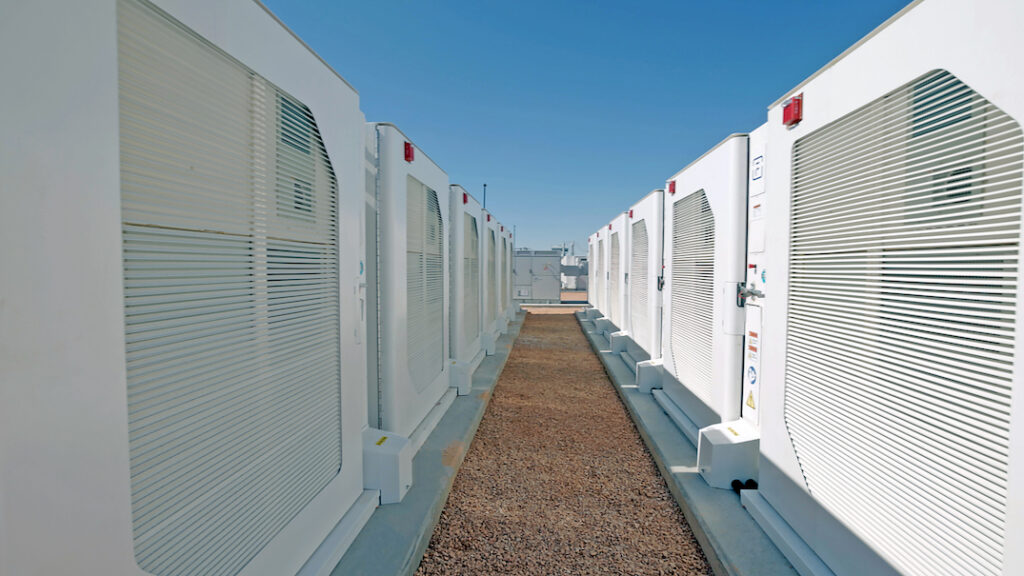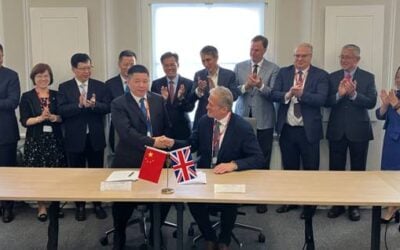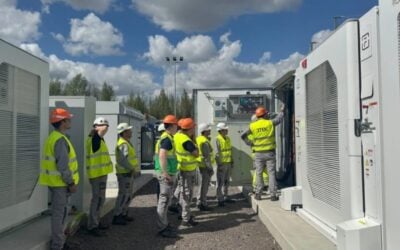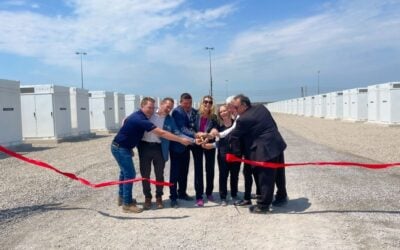
Fluence’s share price jumped 25% on their first day of trading on the Nasdaq Global Select Market.
The energy storage technology provider’s Class A common stock listed yesterday (28 October) under the ticker ‘FLNC’, priced at US$28. At close of trading the price had risen to US$35. A total of 35.65 million shares are on sale, 31 million to the public and a further 4.65 million offered to underwriters.
Enjoy 12 months of exclusive analysis
- Regular insight and analysis of the industry’s biggest developments
- In-depth interviews with the industry’s leading figures
- Annual digital subscription to the PV Tech Power journal
- Discounts on Solar Media’s portfolio of events, in-person and virtual
The IPO valued the company at about US$4.7 billion, a considerable jump after investment from a Qatari sovereign wealth fund made it the energy storage space’s first billion dollar+ unicorn startup at the beginning of this year.
Fluence was launched as a joint venture (JV) by AES Corporation and Siemens in 2018, building on the activities of both companies in the energy storage space for around 13 years prior to that. The company provides energy storage systems but has also begun delivering software-driven asset management services for renewable energy as well as storage.
Although the company is one of the leaders in the space, with over 3.7GW of battery storage deployed or contracted in 29 different global markets and over 4.5GW of wind, solar and storage assets optimised or contracted in the key markets of California and Australia, there is an appetite to grow further, Fluence chief financial officer Dennis Fehr told Energy-Storage.news.
“We believe going public is the best way to accelerate our growth and enable greater adoption of renewable energy and decarbonised technologies,” Fehr said.
Funds raised will be used to repay all outstanding borrowing under existing Line of Credit and Promissory Notes, as well as for working capital and general corporate purposes.
Over the next couple of years, the company will be introducing and productising new digital applications, energy storage and services, expand into new markets and expand its supply chain and manufacturing relationships into the Americas and the EMEA region, according to CFO Dennis Fehr.
Clean energy industry finance expert Charles Lesser from transaction advisory specialist Apricum had told Energy-Storage.news a while ago that he believed Fluence’s IPO process, including its roadshows to investors, would help raise the profile and credibility of energy storage as well as of renewable energy and storage asset management and optimisation businesses.
“There is a lot of investor interest in clean energy these days and investors appreciate our approach to transform the way we power our world,” Dennis Fehr said of the roadshows.
While there have been several energy storage companies going public in the past year or two through special purpose acquisition company (SPAC) mergers, the CFO said that as an “established company” in the space, “the traditional IPO route was best suited for Fluence”.
What makes Fluence believe it can succeed?
Prior to the IPO, Dennis Fehr had said in a presentation to investors that Fluence’s business model is “capital light”. He explained this further to Energy-Storage.news:
“We don’t invest into or own factories and machines,” he said.
“We have entered outsourcing contracts for the assembly and production of our Fluence Cube (part of the company’s sixth generation battery storage system offering), which ship directly from our contract manufacturers to job sites or designated warehouses. By using regional contract manufacturers, we can drop ship products directly to our customers’ sites, which improves working capital turnover, quality, and inventory management and thus keeps our balance sheet light.”
The company doesn’t “consistently see one competitor across markets where we operate,” according to the CFO, who said Fluence’s competition varies across geographies, grid services markets and customer segments.
It is hoping it can differentiate itself from that varied and competitive field through a combination of its long track record in the space, its “disruptive” AI-enabled software and digital applications that it can offer to renewable energy assets and third party energy storage systems as well as its own systems and finally through its ability to be battery technology agnostic.
“Our products are compatible with both current and next-gen technologies and solutions,” Fehr said.
One big question hanging over the clean energy industry — in fact hanging over many different industries — in 2021, is supply chain robustness. Fluence said in its IPO prospectus that it has 20GWh of battery cell supply deals in place over the next few years, which should give its customers some assurances.
Energy-Storage.news asked what some of the company’s strategies are in ensuring supply chain resilience.
“We have developed a global supply chain with an evolving regionally focused operational model with the objective of developing mass manufacturing facilities globally, assembling products in proximity to major markets and partnering with innovative suppliers,” Dennis Fehr said.
“We are moving to a more localised, regional organisational structure to better support customers and improve logistics. And we are focused on expanding standardised offerings that are optimised for each of our sales channels, allowing us to streamline product procurement for our customers.”






